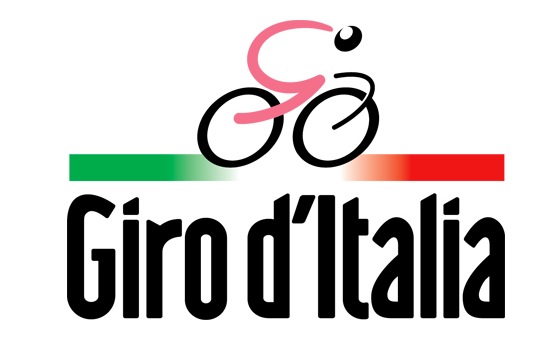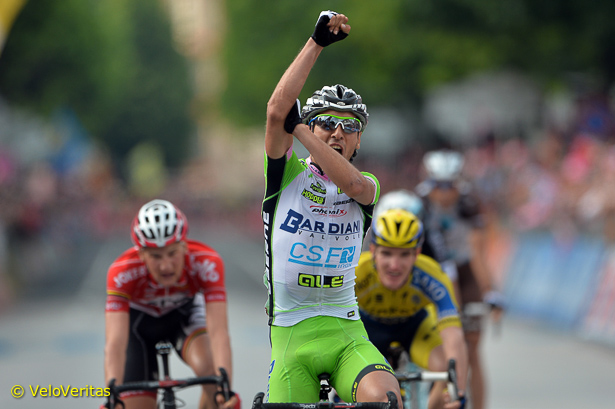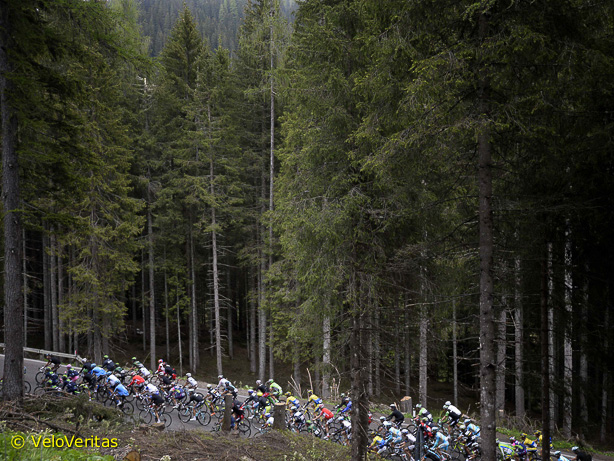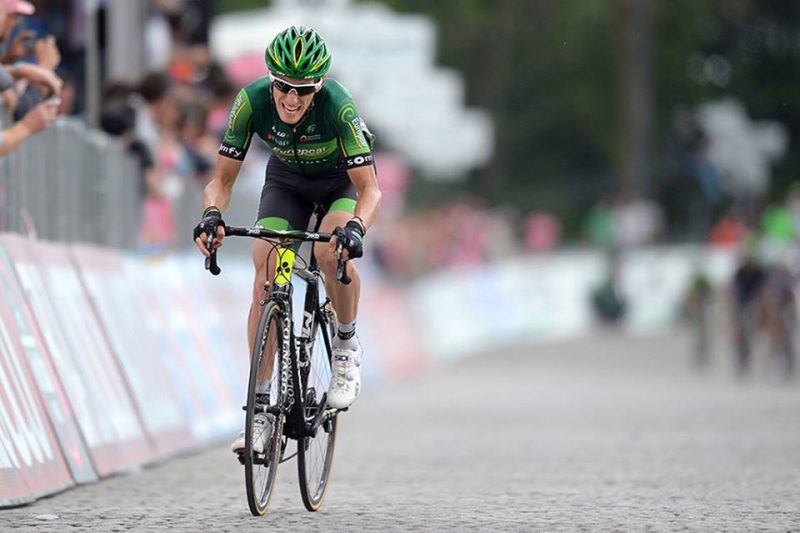 The other day we had the score down as 2:0 in the Bardiani v. Sky match – well, it’s now 3:0 as the versatile Stefano Pirazzi demonstrated the desire, desperation and grinta you need to be a Giro stage winner.
The other day we had the score down as 2:0 in the Bardiani v. Sky match – well, it’s now 3:0 as the versatile Stefano Pirazzi demonstrated the desire, desperation and grinta you need to be a Giro stage winner.
As well as being a former Tirreno and Giro King of the Mountains, he’s been a medallist in the Italian TT Championships.
This is his fifth full pro season – initially with Colnago and remaining with the team as it morphed into Bardiani.

Bardiani make valves, by the way, for just about anything – their blurb states; ‘Bardiani Valvole Company a world renowned supplier of high quality sanitary and hygienic valves.
Today, we are able to offer a complete line of superb performance valves to the dairy, winery, brewery, food and beverage, chemical, biotech and pharmaceutical Industries.’
Whilst CSF is; ‘a leading company in Italy and Europe for the production of stainless steel pumps and steam/water mixers for different kinds of products in the Food, Beverage, Pharmaceutical, Chemical industries and others.’
Yes, we knew that would fascinate you – however both companies must be over the moon at the results the team has achieved and consequent media exposure.

Sky has been low key in this race; albeit Dario Cataldo and Phillip Deignan have been in the action – but no wins.
But David Brailsford & Co. know that there’s only one race which really matters to the Sunday Times readers and Sky viewers – and it isn’t in Italia.

The ‘Bigs’ had as easy a day as you can hope for in the Giro; after a savage first two hours the right combination went up the road and was allowed to soar away to a 15 minute lead.
The group was huge, it split and split again leaving five to cat fight for the win; and it was Pirazzi who wanted it most – call me soft but I love it when a man wins a stage and bursts into tears.
I know it would never do at Sky, though…
The ‘polemica’ rumbles on, meanwhile – but before we get back into that, let’s talk a little about who shone yesterday.
We went deep into ‘StelvioGate’ yesterday at the expense of who did what on the percorso.
Mick Rogers did sterling work for his Tinkoff team leader, Rafal Majka, yesterday; and if you ignore the ‘monkeydom’ aspect for a moment then both Pierre Rolland (Europcar & France) and Ryder Hesjedal (Garmin & Canada) performed strongly.

We’ve been saying that Hesjedal should forget GC and go for stages; yesterday he almost did both and now lies ninth at less than a minute from the podium- respect, Mr. Hesjedal.
And to repeat, it’s great to see a Frenchman in a GC battle in a Grand Tour again; Rolland is now fourth a mere five seconds behind Cadel Evans (BMC & Australia).

Quintana; barring act of God, illness or injury and even with the stress surrounding his pinching that time yesterday, the race looks like it’s his – he makes everyone else look ordinary in the high mountains.
Which is why the incident on the Stelvio is so vexatious to everyone; especially those who toed the line and didn’t ride hard off the summit.
Perhaps Quintana wouldn’t have taken the jersey on stage 16, but there’s still the mountain TT and Zoncolan to come – the stolen time was against the natural progression of the race.

In Belgium a Sporza poll puts the percentage of readers who think the stage shouldn’t have gone ahead in the first place at 67% – but I guess in Bogota that would be 0.67%?
But the words of Astana’s manager, Giuseppe Martinelli do ring true;
“Yesterday, if Quintana had started the climb with the other favourites, he would never have had four minutes of an advantage.
“That’s the truth. It would never have happened.
“Never. If Quintana had attacked on the final climb, Uran could have responded, or Aru.
“He might still have won, but not by four minutes, that’s for sure.”
The AiGCP – Association International des Groupes Cyclistes Professionels – the closest there is to a professional cyclist’s union requested that the time differences on the stage be nullified.
But that was never going to happen; not with the pink jersey on Quintana’s back – there was absolutely no way the organisers were going to take it back off him.
The thing which puzzles me us is that in this risk averse – with rules and procedures for everything from going to the toilet to changing a light bulb – and litigation-mad world, there was no risk assessment carried out for a stage where there were 10 foot high snow banks beside the road.
The first risk would to be considered would surely be; ‘what if one of the descents is dangerous as a result of snow and/or run-off water?’
That course of action in that event should have been agreed and circulated to all the managers and DS – in that way there could be no argument.
It wouldn’t necessarily mean that the stage was annulled – ride the descent easy then re-group at the bottom and then ‘game on.’
Whilst no of us should bleat on about the debacle forever, it has to be learned from – apart from anything else, a dangerous precedent was set where, if there is no clear guidance which applies to all of the field then certain ‘rogue’ riders can do what the hell they like than wriggle back out of facing any consequence.
Spend less time messing about with jigs at time trials, UCI and pay attention the stuff that really matters – like this, real life pro bicycle racing.
No cushy ‘transition’ stage tomorrow; 171 K with a second and two first cat. climbs – with the finish at the top of the second cat. one.
Quintana may have got away with what happened on the Stelvio but it’ll be fresh in the mind of a whole host of the GC contenders and he’ll have few allies in that peloton now – if he does hit difficulties then outside of his own team there will be no helping hands extended.



